Cary Grace is a recent discovery that has knocked my music luvin’ socks off. Born in South Carolina, she relocated to the UK (via Nashville) in 2005, where she has resided since. Dive into her new Tygerland album and back catalog and you will be treated to a dizzying array of music, from Psychedelic and electronic injected Pop songs to long stretched out Space-Prog improv instrumentals. Vince Gill played on her album in 2004 and she played on F/i’s latest album. How’s that for diversity? And she makes synthesizers for a living.
With so much amazing music in her catalog and such an intriguingly varied background, I wanted to know more about this multi-faced artist and conducted the following interview by email. Thanks to Cary for all the photos.
Aural Innovations (AI): Your first album from 2004 was recorded in Nashville. Listening to samples on your discog page I hear Country flavored Pop. And I see Vince Gill plays on the album. Given the Prog-Psych-Space-Kraut styles that characterize much of your later music, this really begs the “tell me about your musical background” question.
Cary Grace (CG): My first album was recorded over a period of several years. It was a learning experience for me, as throughout this time period I was teaching myself all I could about recording and audio engineering, and constantly improving (and rebuilding several times) my home studio. I’ve always had an interest in electronics and in recording, but doing it all myself was really dictated by necessity, as it just wasn’t going to happen any other way.
Almost all the musicians on that record are paid session players, which is one of the reasons it took so long to record, as I wasn’t making much money and had to save up to record songs, even though I was providing my own studio. The other reason is lack of time and
energy, since I was working fulltime, and doing all my own studio maintenance. There was certainly no time left for recreation.
A few kind souls helped me out by recording tracks free of charge, and Vince Gill was amongst those. He is a lovely person, and a great musician.
As you noted, it’s quite different musically from what I’m doing now. My experience of Nashville was one of pressure to conform, and the all-pervasive music business viewing music as a commodity, not an art form. It is also a very genre-centric place (Country music). I’m sure that this factored into what I was doing creatively at the time, but also I had to write, arrange, and chart every song in a vacuum, with no input from the musicians who would be playing on it.
To me, music creation is often (but not always) best when multiple creative vectors come together, and this was just not an option on the first record, since I had no like-minded collaborators. I haven’t listened to that album in a very long time, because it just makes me think of what it might have been had circumstances been different.
I was in an acoustic folk/folk rock duo for years before I recorded my first solo album, so that might also shed some light on the material. I view it as finding my feet on my own and learning a lot, rather than a terribly viable album. The world agreed. It got about one and a half utterly dire reviews and died a death, commercially anyway. I’m really glad I didn’t quit, though.
AI: What brought you from South Carolina and Nashville to the UK in 2005 (where I believe you remain to this day)?
CG: My dad got a job in Nashville when I was about seven or eight, as an audio engineer for a The Nashville Network, so my family moved to Nashville. I grew up there and remained in the Nashville area until my 2005 move. As to why I came to England, well, I already said what I thought of Nashville, and I wanted to make a completely new start in a place where nobody knew me. England seemed just about far enough away for comfort. As it happens, I love it here.
AI: Your next album – Where You Go (2007) – consists of music that isn’t far off from your first album. I only heard samples of the first album but Where You Go seems more Bluesy. But there’s something more going on with the gliss guitar,
synths and effects. These are accessible songs but you’re now in some cases injecting a trippy, dreamy Psychedelic element into the music. Were these tentative steps toward exploring your inner cosmonaut?
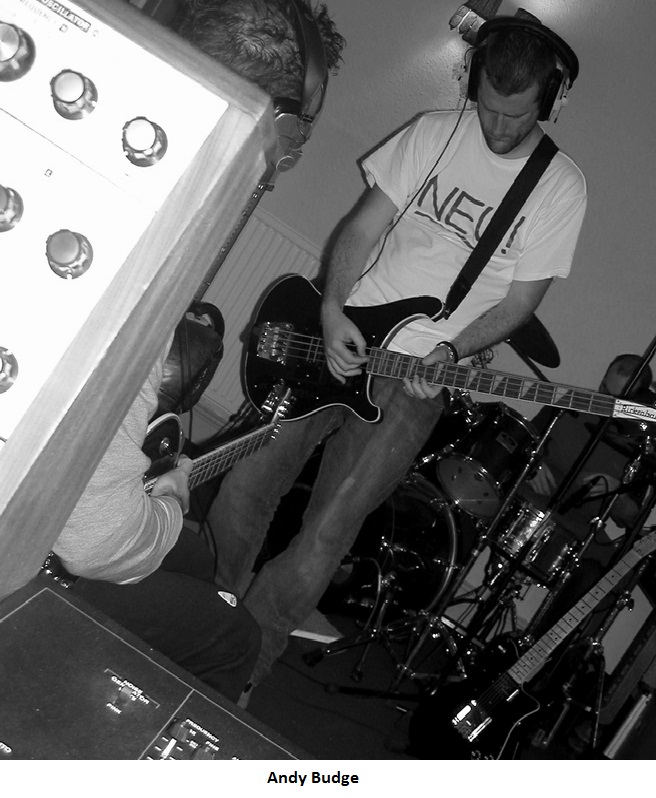 CG: Yes, definitely. I was feeling a lot more free to experiment and begin to move in directions I wanted to explore. I found a great musical collaborator in Andy Budge (who plays bass on almost everything I’ve done since my move to the UK), and was beginning to zero in on a sonic palette that would become “my sound”, whatever that actually is. The creative process of making Where You Go, however, was still very much a case of writing a song in its entirety, charting it, and directing the band fairly specifically.
CG: Yes, definitely. I was feeling a lot more free to experiment and begin to move in directions I wanted to explore. I found a great musical collaborator in Andy Budge (who plays bass on almost everything I’ve done since my move to the UK), and was beginning to zero in on a sonic palette that would become “my sound”, whatever that actually is. The creative process of making Where You Go, however, was still very much a case of writing a song in its entirety, charting it, and directing the band fairly specifically.
AI: You clearly have a love for the Blues and are a potent and passionate singer. I’ll single out Amber, from your next album Mendip Rock, as a personal favorite in this regard. I love the way it alternates between lovely, lilting songbird tune and dirty dynamic Blues.
CG: Thank you. I love that one too.
AI: Mendip Rock also includes your cover of the Stones’ 2000 Light Years From Home, which has the most prominent electronic effects used in your music up to that point and really takes off into space. Tell me about how that song came together.
CG: Mendip Rock is sort of a natural progression from the track Summer on Where You Go. I decided to draw a line under everything, throw away any preconceived notions I had about what might or might not be acceptable to the listener, and begin experimenting with sounds and song forms that I could really get excited about. Up until that point I think there was a part of me, subconsciously, that was still stuck in Nashville and/or trying to be successful as an artist.
I began the inner process of giving up on ever being commercially successful as an artist around 2008. It was the hardest thing I’ve ever done to face the fact that my dream, my life’s obsession, would probably never come to fruition, but I faced it, and survived. Actually giving up music was and will never be an option though. That would destroy me.
2000 Light Years always seemed to me to be a spacerock/psychedelic track without the spacerock or the psychedelia, if that makes any sense. I thought it needed revisiting. Lots of people have covered it, but I wanted to do something different, so I did. There are all sorts of sonic effects on that track, one of my favourites being some large platters removed from SyQuest cartridges that I spun on a stone floor and recorded in stereo. There were also propane gas bottles being struck, and glass demijohns being dragged across tiles. Some of these sounds were then transferred onto analogue tape and slowed down multiple times, which can create a truly eerie soundscape that I haven’t found any way to achieve inside a computer.
AI: Projections, released the same year as Mendip Rock, really ups the Prog-Psych ante. Kaleidoscope feels like deep space Pink Floyd. The shorter songs that are Pop at the core also have that dreamy, spaced out and effects-laden mixture that was so striking when I first heard Tygerland. But then you’ve got the 11 minute Prometheus, which is both song and deep space exploration. And the 18 minute Eye, which has this cool soulful groove, lovely Pop vocals, and spaced out atmospherics and effects. It’s like this seamless blend of Pop elements, Blues, Prog Rock, Psychedelia and Krautrock, and it’s this extremely difficult to describe blend that seems to characterize your music since then.
CG: Yeah, I think you’ve correctly spotted a turning point of sorts.
AI: It looks like you had the same musicians playing on Where You Go, Mendip Rock and Projections. Except for Andy Budge it looks like you took on a new crew with Perpetual Motion, which noticeably goes even further into spaced out Progressive Rock territory. Was that intentional or just a natural outcome of the musicians you were working with?
CG: Without delving into the black morass of band politics, basically Andy and I had a discussion during the mixing stage of Projections. We both agreed that we were feeling creatively throttled by the current situation, and needed to get some new blood involved. Andy invited a couple of his friends to my place for a jam session, and it worked so brilliantly that it became Perpetual Motion. The thing about Projections, returning to that for a moment, is I was clearly trying to move in a certain direction with my music, and Andy was right there with me, but we were struggling to realise the vision. That first jam session which later
metamorphosed into the bulk of Perpetual Motion changed everything.
AI: Perpetual Motion, and the amazing Green Carrot Jam, is also the album with the most extended tracks and the most instrumentals. Were these improvisations?
CG: Yes. I had already written two new songs at the start, The Scarab and Queen of Pentacles. My plan for Queen of Pentacles from the outset was to turn it into an extended jam. Rough versions/sketches for those two songs were recorded at that initial meeting, and then quite a bit more time was spent coming up with new ideas/improvising. Nobody went into that jam session thinking it was going to be an album, much less a double album, but it just worked. We all listened to the recordings after adjourning, and were unanimously enthusiastic.
I was instantly inspired to turn one of the jams into a song – Dreamcatcher – which I think really captures the optimistic atmosphere of this period. Perpetual Motion followed soon after when I wrote lyrics and a vocal melody for an edited jam track.
The next step of course was recording the material properly, since I foolishly had not made any real effort to get a useable recording out of the jam session. (I will not make that mistake ever again.) I brought in Graham Clark on violin for the session, who is a brilliant musician, and provided a perfect counterpoint to John’s keyboards and guitar playing.
The musical portion of Helleborus is what happened spontaneously when everyone got into the same room together and plugged in, the first day of the sessions. I nearly didn’t make it to the control room in time to press record!
AI: Monday Machines is the one example of an album not released under the Cary Grace name. Why was that a “band” name? The music and musicians seem to be consistent with many of the Cary Grace albums.
CG: Yes and no. Monday Machines is primarily a long-distance collaboration between myself and Allan Coberly (guitarist). You’re right that the rhythm section is the same, but the Monday Machines album was really an effort to see what sort of music I could produce primarily on my own, without virtuoso soloists to make me sound good. Somehow, I played most of the instruments on that album. It was a personal challenge. Besides the fact that it was really a collaboration project (with Allan) rather than a solo album, doing it under a different name seemed right, because I wasn’t sure where it would go, and wanted to feel I had the freedom to follow it wherever it did go. It was born out of an idea based on a recording of jackhammers tearing up Allan’s street, which inspired a song, which we then decided to turn into an album.
There are a couple of Monday Machines singles that I haven’t had the time to finish yet, so you will be hearing more from Monday Machines at some point.
AI: I guess Monday Machines isn’t the only example. You released the Archangel Thunderbird (Amon Düül II cover) single with Mauve La Biche “featuring” Cary Grace. I did some Googling and couldn’t find much info about them. Who are they are how
did that recording come about?
CG: Mauve La Biche is the moniker for Andy Budge and John Garden’s ongoing project. I don’t actually recall the complete thought process by which we ended up putting the single out under that name, but I think it had something to do with the fact that I had written lyrics and a vocal melody for one of their instrumental compositions (Green Machine) which became the B-side. And, covering Archangel’s Thunderbird was Andy’s idea originally. We used a different drummer, and Andy played all the guitars, so it was really his project.
I guess you could say that both of those projects are under different names for circumstantial reasons rather than actual musical content.
AI: With all the different music you create and include on the same albums, I can’t help but wonder what kind of audience you are targeting?
CG: If you find out, please let me know. It would probably help to know that, but it isn’t something I lose sleep over. I just make whatever music I want to make, and put it out there, and if people like it, fantastic. If they don’t, well, obviously they have no taste, right? And when people ask me what kind of music I make, I usually stand there in shock for a moment, then have an internal debate for several minutes trying to think of a way to sum it up, and then just hand over my card and tell them to go listen and let me know what they think it sounds like.
I consider myself pan-musical in my listening habits, and I guess it only makes sense that I should be the same way in the music I create. Being caged inside one oppressive little genre box and fed packaged chord progressions would bore me to tears pretty quickly. Some of my favourite albums stand out because of their diversity, but hold together as albums because the diverse elements have been made to flow together into a complete piece of art. That is what I strive for. I find it very difficult to listen to albums that sound exactly the same from start to finish and never progress, or take you anywhere you weren’t expecting to go.
AI: Between Where You Go in 2007 and Constant Things in 2011 there was quite a flurry of recording and releases. And then things went (seemingly) quiet until the recent Tygerland album. Were you not active in music during that time?
CG: I was definitely still active in music, but I’ve been otherwise occupied for much of the time with the synthesizer company I took on a few years ago, so have not actually released much recorded music in that time period. I’ve definitely been creating music the whole time, my work with F/i being a good example. I have an incredible backlog of music that needs finishing and releasing, and I’m chipping away at it as and when I can.
AI: Tell me about your company Wessex Analogue, which makes Wiard brand synthesizers. (I like the line in your bio that says, “She is as much at home wielding a soldering iron as a guitar”.)
CG: Grant Richter, also of the Milwaukee spacerock band F/i, started Wiard Synthesizer Company in 1999. He was searching for someone to pass the torch to when we started corresponding around 2010, because he was unable to do bench work anymore due to problems with his spine. One thing led to another, and I ended up going over there and working with him for months-long periods over the next couple of years, and finally moving production over here.
The Wiard 300 Series began as a modular synthesizer system which drew ideas from many schools of electronic music, brought together in unique ways by Grant’s particular design aesthetic. I am currently working on new designs for the system, as well as hand-building
systems to order for customers. These are very much hand-crafted musical instruments. In taking this business on and making it my own, I like to think I’ve become the synthesizer equivalent of a luthier.
AI: I suspect that my next question ties in with the previous one, but how did you end up joining F/i? Did you play on any albums other than Venusian Holiday?
CG: Well, I mentioned Grant Richter. He introduced me to the rest of the band while I was in Milwaukee, and as musicians do, we decided to make some music together.
There are a couple of other things I was involved in. There was the Boy Dirt Car / F/i split LP remake, on which I helped out with electronics. We also recorded a new version of F/i’s Looking For My Head, which I sang on, but for some reason the label cut it from the LP. Word was it was going to be a bonus track on the digital release, but I don’t think there ever was a digital release (I could be mistaken though have not checked iTunes for it in a while). Maybe someday it will surface.
The other thing is The Itinerant Lanternist LP, on the Pure Pop For Now People label, to which I contributed some Hammond organ and electronics.
Venusian Holiday is the one I was most intensely involved with though. I produced it, mixed it, did the cover artwork, and designed the sleeve.
AI: I think I read that you also toured with F/i? Was that in the U.S.?
CG: F/i doesn’t really “tour” anymore. We did a couple local (Milwaukee) gigs though.
AI: Do you do much live performance? You’ve got one live track (Eye) dated 2008 in your web shop.
CG: I have not performed much at all for years, though I do the odd gig here and there. This has been largely due to other obligations (both my own and those of the musicians I work with), but also due to a feeling of disillusionment with the sorts of gigs that were available to me. There seemed very little point, and so I have preferred to focus on the studio.
I’ve decided to change all that, though, after attending a few very promising music festivals this summer. I’m currently working on trying to line up some gigs for next year, and if it works out, it will be great to get back on stage again.
AI: I’m very interested in how musicians handle distribution and what formats they make available in this rapidly evolving world. Is Door 13 your own label? Looking at your web shop it seems that everything is available digitally and most of your albums are available on CD too. Are you handling manufacture and distro yourself?
CG: Yes, Door 13 is my label, and I do everything myself, right down to making a lot of the actual packaging by hand. I have up to this point done physical releases on CD only for economic reasons, but I hope as my fan base increases that vinyl releases will become a possibility as well, as I really love the format. My ideal package would be a vinyl record with a high-quality (preferably 24-bit) download included.
AI: I see that it’s on hiatus right now but what kind of music were you playing on your The Airtight Garage radio show?
CG: Going back to something I touched on earlier, about weaving diverse elements together into a greater whole – that’s
what The Airtight Garage is about. The idea from the outset was to paint myself into a corner by playing something unfollowable, and find the perfect segue to make it all (apparently) make sense. It’s half radio show, half art project based on Le Garage Hermétique de Jerry Cornelius, by the French artist Moebius. (Which is worth looking up if you are at all into underground comics, or graphic art in general.)
I read somewhere (can’t find the source now) that when Moebius was doing the original serial version of Le Garage Hermétique (The Airtight Garage), he would intentionally build in seemingly impossible to tie up plot discontinuities as a challenge to himself to figure out a resolution by the next instalment, or at least by the end of the serial. That was the inspiration for my radio programme.
Grand concepts and formats aside, it is primarily a forum to bring great music to people who probably wouldn’t have heard it otherwise in a context that is (hopefully) engaging, and certainly a little bit different.
And yes, it will be back, just as soon as I find some more time.
 AI: What bands/artists are exciting you the most these days?
AI: What bands/artists are exciting you the most these days?
CG: I’ve been so busy I have not had nearly enough time to listen to music, but I have been to some live gigs, and a few bands come to mind. Firstly, everyone who likes improvised music and/or something a bit spacey should check out Sentient, which is a fairly new band fronted by the amazing Steffe Sharpstrings. Steffe has put together a great band, and they have a couple of excellent CDs out, which were recorded live of course, because that is what they do.
I also had a chance to catch a live set by The Luck of Eden Hall at The 13th Dream of Dr. Sardonicus Festival. I’ve been aware of them for some time, and liked their work, but I have to say seeing them live was even better. I was duly impressed. They put on a very good show, and are all really nice guys too. Well worth having a listen to their albums on their Bandcamp site. I also really enjoyed seeing Magic Bus play at the same event.
And, I had a rare opportunity to see Amon Düül II in London on their current tour. They were indescribably great.
AI: Any news, activity, upcoming releases you care to tell us about?
CG: I’m currently sifting through dozens of hours of recorded material from sessions last year and this year, little by little. There are easily a couple of albums in there, and many songs that need to be written, so more music will be coming soon.
Also, there’s an entire side of my music that has yet to really see the light of day, apart from a few glimpses. That would be the electronic one. I prepared a set of new material for a live performance at Freerotation this summer, which I think will form the basis for an album, or at least an EP, of more electronic-focused music. To be clear, this isn’t a change of direction away from the rest of what I do, just another facet.
One release I can say will definitely be out very soon is the CD reissue of Mendip Rock, which has been unavailable in a physical format for some time.
Also forthcoming for those lucky people who are part of the Fruits de Mer Records club, I’ve just finished a final mix on a track for the next members’ CD, which I believe is due early next year, but check with Fruits de Mer for details.
I encourage anyone who would like to receive news and updates to go to my website and fill in the contact form to be added to my email list, and/or follow me on one of the social networking sites linked at the bottom of the main page.
Stay tuned…
Visit the Cary Grace web site at: http://carygrace.com
Stream Cary Grace albums and purchase downloads and CDs at the Cary Grace web shop: http://music.carygrace.com
Visit the Monday Machines web site at: http://music.mondaymachines.com
Hear an all Cary Grace special on Aural Innovations Space Rock Radio. CLICK HERE and scroll down to show #357
Interview by Jerry Kranitz
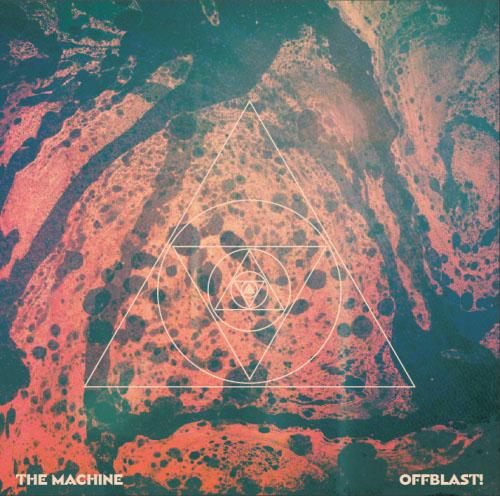 Offblast! Is the fifth full length from Dutch rockers The Machine. The album consists of 6 tracks, with 4 shorter tunes sandwiched between two lengthy stretch-out tracks.
Offblast! Is the fifth full length from Dutch rockers The Machine. The album consists of 6 tracks, with 4 shorter tunes sandwiched between two lengthy stretch-out tracks.
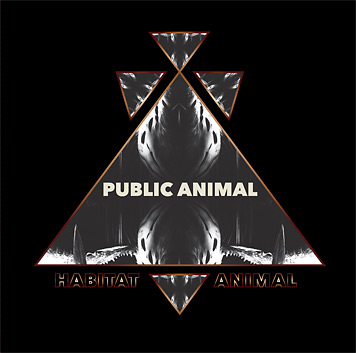 Public Animal are the Canadian quartet of Caitlin Dacey on keyboards and vocals, Erick Larock on bass, Ian Blurton on guitar and vocals, and Ryan Gassi on drums, plus Michael Blurton contributing spoken word. Habitat Animal is their debut album.
Public Animal are the Canadian quartet of Caitlin Dacey on keyboards and vocals, Erick Larock on bass, Ian Blurton on guitar and vocals, and Ryan Gassi on drums, plus Michael Blurton contributing spoken word. Habitat Animal is their debut album. Fiesta In The Dank is a special release because it marks the 30th anniversary of the year that Charles Rice Goff III and Killr “Mark” Kaswan formed Disism. After lying low for a while, Disism got kicked started in 2012 when Goff found several cassette tapes of improvisations and collages that had been recorded between 1988 and 1995. This resulted in the Disism reDIScovery series in which Goff edited the recordings into various fun forms for public release.
Fiesta In The Dank is a special release because it marks the 30th anniversary of the year that Charles Rice Goff III and Killr “Mark” Kaswan formed Disism. After lying low for a while, Disism got kicked started in 2012 when Goff found several cassette tapes of improvisations and collages that had been recorded between 1988 and 1995. This resulted in the Disism reDIScovery series in which Goff edited the recordings into various fun forms for public release.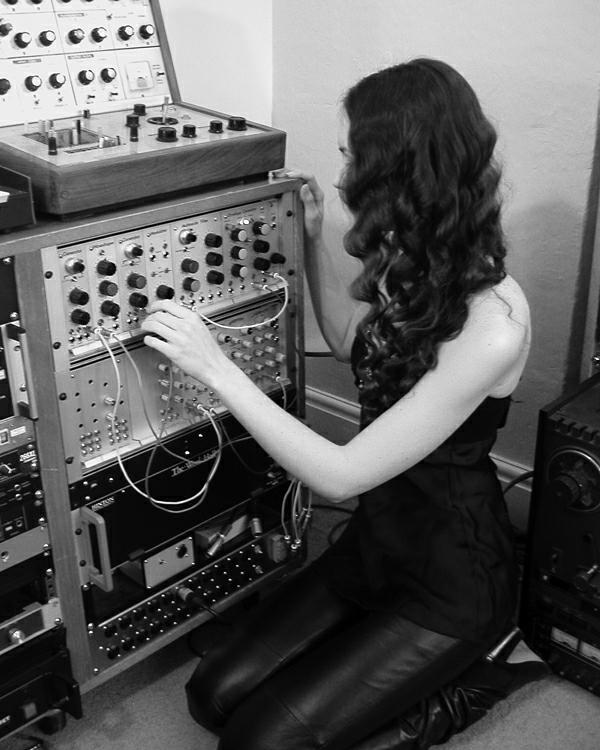
 CG: Yes, definitely. I was feeling a lot more free to experiment and begin to move in directions I wanted to explore. I found a great musical collaborator in Andy Budge (who plays bass on almost everything I’ve done since my move to the UK), and was beginning to zero in on a sonic palette that would become “my sound”, whatever that actually is. The creative process of making Where You Go, however, was still very much a case of writing a song in its entirety, charting it, and directing the band fairly specifically.
CG: Yes, definitely. I was feeling a lot more free to experiment and begin to move in directions I wanted to explore. I found a great musical collaborator in Andy Budge (who plays bass on almost everything I’ve done since my move to the UK), and was beginning to zero in on a sonic palette that would become “my sound”, whatever that actually is. The creative process of making Where You Go, however, was still very much a case of writing a song in its entirety, charting it, and directing the band fairly specifically.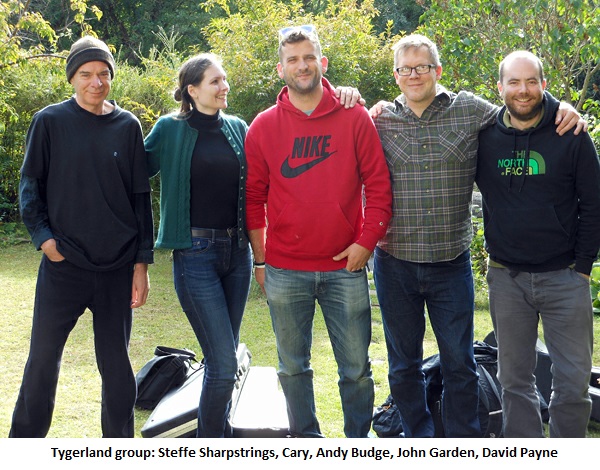
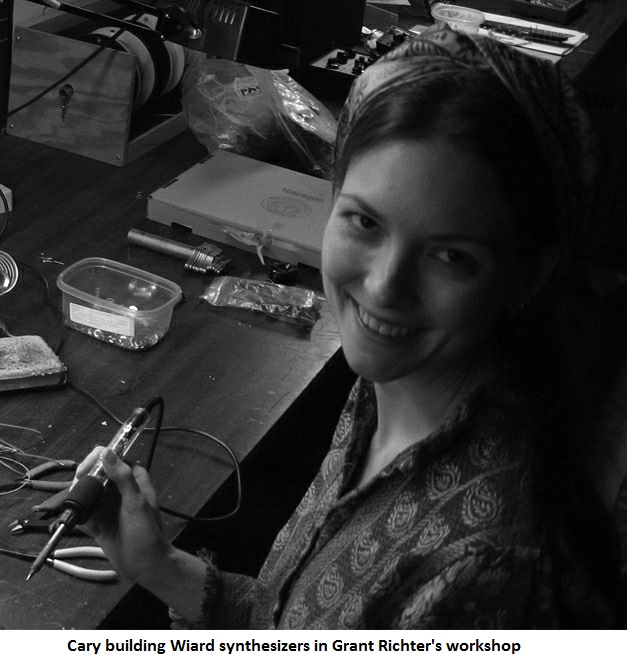
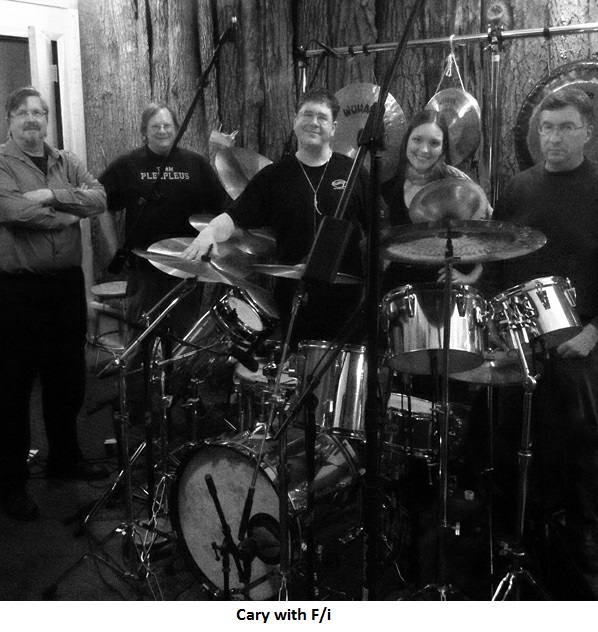
 AI: What bands/artists are exciting you the most these days?
AI: What bands/artists are exciting you the most these days?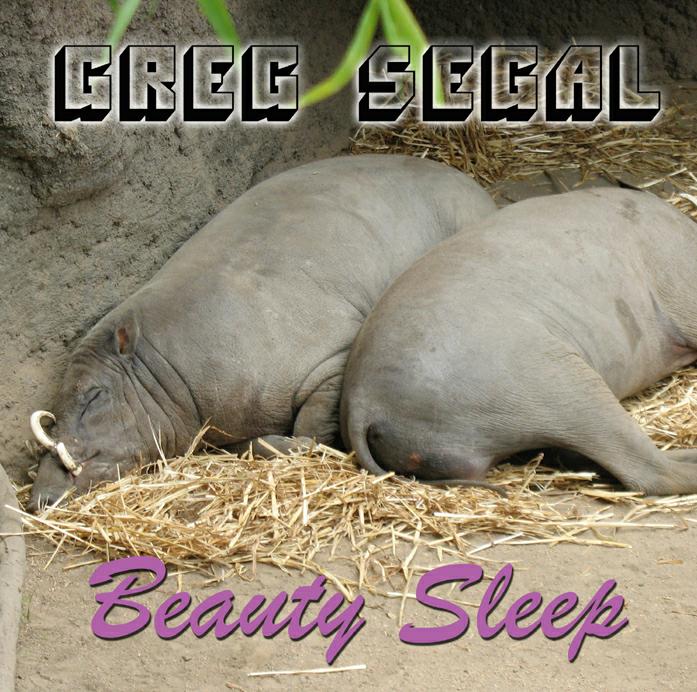 Greg Segal is seriously making up for lost time after having musically laid low for some years to concentrate on parenthood. In March he released the marvelous A Handful Of Ashes album, I’ve now got the new Beauty Sleep in my greedy little hands, and I see that yet another new set (Skeleton Parade) is available.
Greg Segal is seriously making up for lost time after having musically laid low for some years to concentrate on parenthood. In March he released the marvelous A Handful Of Ashes album, I’ve now got the new Beauty Sleep in my greedy little hands, and I see that yet another new set (Skeleton Parade) is available.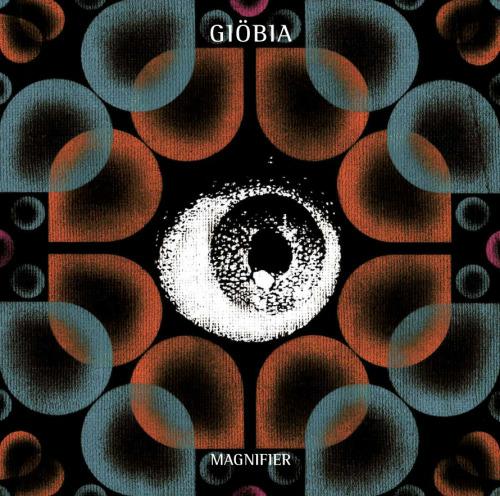 Milano, Italy based Giöbia are back with the successor to their 2013 released Introducing Night Sound album (also on Sulatron). In my review of that album I commented on how very different it was from their one previous set I had heard, the 2004 released Beyond The Stars. Whereas the earlier album was like a song-oriented take on an Ozric Tentacles meets Ship Of Fools style, Introducing Night Sound was characterized by a combination of 60s influenced Psychedelia and Space Rock with bouzouki and sitar inflected ethnic influences.
Milano, Italy based Giöbia are back with the successor to their 2013 released Introducing Night Sound album (also on Sulatron). In my review of that album I commented on how very different it was from their one previous set I had heard, the 2004 released Beyond The Stars. Whereas the earlier album was like a song-oriented take on an Ozric Tentacles meets Ship Of Fools style, Introducing Night Sound was characterized by a combination of 60s influenced Psychedelia and Space Rock with bouzouki and sitar inflected ethnic influences.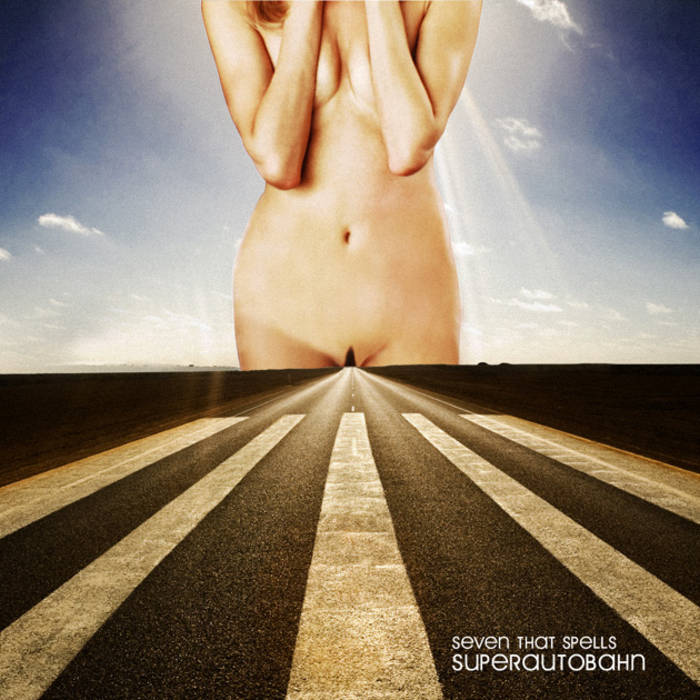 Sulatron reissues this 2012 album on vinyl LP, which by necessity trims some of the track lengths but provides a tasty package for vinyl junkies. Superautobahn is a super special set in that joining Seven That Spells ship captain and guitarist Nico Potocnjak is Acid Mother’s Temple’s Kawabata Makoto on guitar.
Sulatron reissues this 2012 album on vinyl LP, which by necessity trims some of the track lengths but provides a tasty package for vinyl junkies. Superautobahn is a super special set in that joining Seven That Spells ship captain and guitarist Nico Potocnjak is Acid Mother’s Temple’s Kawabata Makoto on guitar. 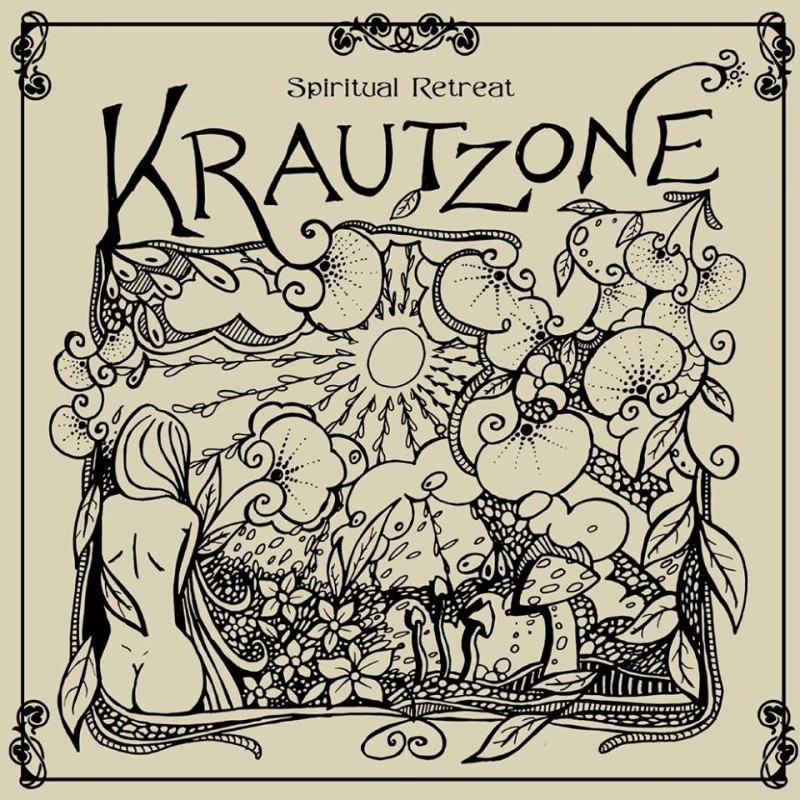 Krautzone is a German collective of musicians from such bands as Electric Moon, Zone Six and The Pancakes, who got together in 2011 for some jamming and produced enough recordings for several albums. Kosmische Rituale was their debut in 2013, a split with Lamp Of The Universe came out last year, and now we’ve got Spiritual Retreat, a vinyl release (limited to 777 copies) with one 20+ minute excursion on each side.
Krautzone is a German collective of musicians from such bands as Electric Moon, Zone Six and The Pancakes, who got together in 2011 for some jamming and produced enough recordings for several albums. Kosmische Rituale was their debut in 2013, a split with Lamp Of The Universe came out last year, and now we’ve got Spiritual Retreat, a vinyl release (limited to 777 copies) with one 20+ minute excursion on each side. Capping off the Krautzone story is the new Complete Works 2-CD set which brings together the first album, Krautzone’s side of the split with Lamp Of The Universe, the new Spiritual Retreat, and one unreleased track. If you’re new to Krautzone this is the way to go. And if you’ve got the vinyl this is a nice CD package. The 7 minute Schwebung is the unreleased track and includes intense Space-Blues guitar licks that at one point have a cool Pink Floyd One Of These Days grind, plus symphonic keys, hypnotic drone atmospherics and a throbbing beat. Another small bonus is that both sides of the Spiritual Retreat LP play as a single track for a more seamless experience on the CD.
Capping off the Krautzone story is the new Complete Works 2-CD set which brings together the first album, Krautzone’s side of the split with Lamp Of The Universe, the new Spiritual Retreat, and one unreleased track. If you’re new to Krautzone this is the way to go. And if you’ve got the vinyl this is a nice CD package. The 7 minute Schwebung is the unreleased track and includes intense Space-Blues guitar licks that at one point have a cool Pink Floyd One Of These Days grind, plus symphonic keys, hypnotic drone atmospherics and a throbbing beat. Another small bonus is that both sides of the Spiritual Retreat LP play as a single track for a more seamless experience on the CD. Occupying an always interesting space on the accessible/avant-garde axis, California based guitarist Ernesto Diaz-Infante never fails to serve up something different, be it a solo effort or collaboration. Sol Et Terra pairs his 12 string acoustic guitar with veteran ST 37 drummer Lisa Cameron on percussion, electronics and lap steel. The eight tracks, most very different from one another, were recorded at Ernesto’s home studio in the Bay Area. The music has a live feel but the sounds from each player are very precise.
Occupying an always interesting space on the accessible/avant-garde axis, California based guitarist Ernesto Diaz-Infante never fails to serve up something different, be it a solo effort or collaboration. Sol Et Terra pairs his 12 string acoustic guitar with veteran ST 37 drummer Lisa Cameron on percussion, electronics and lap steel. The eight tracks, most very different from one another, were recorded at Ernesto’s home studio in the Bay Area. The music has a live feel but the sounds from each player are very precise.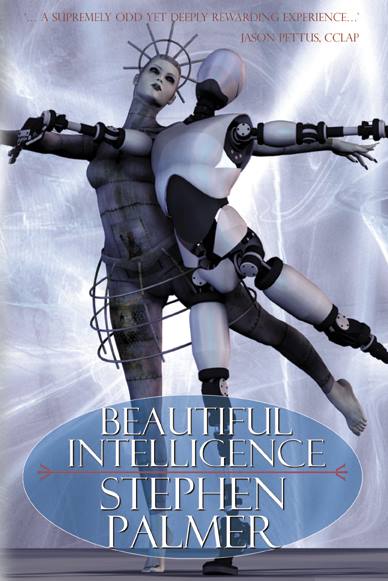 Having read eight previous Stephen Palmer novels the first question that comes to mind with new stories is what kind of world will he create? Palmer has told several tales depicting environmental devastation and last year covered the whole of London in hair. Palmer begins to answer the question in the novel’s opening line reference to a “post-oil world”, leading into what is in ways like and unlike previous books.
Having read eight previous Stephen Palmer novels the first question that comes to mind with new stories is what kind of world will he create? Palmer has told several tales depicting environmental devastation and last year covered the whole of London in hair. Palmer begins to answer the question in the novel’s opening line reference to a “post-oil world”, leading into what is in ways like and unlike previous books.